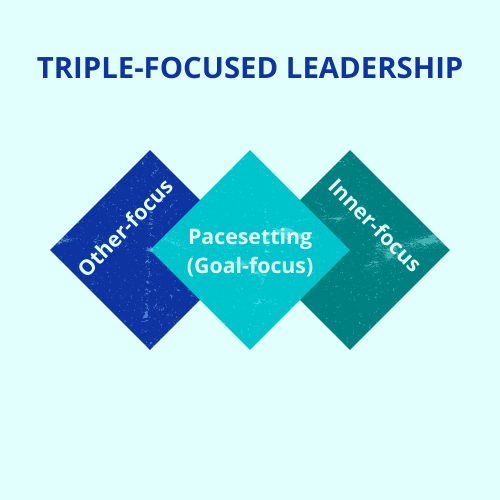
Leaders guide attention. But a single-minded focus on goals can run roughshod over human concerns, says Daniel Goleman.
What stops leaders from growing beyond pacesetting?
One hurdle is the implicit attitude at work that professionalism demands we ignore our emotions. Some trace this emotional blind spot to the “Protestant” work ethic, embedded in the norms of workplaces in the West, which sees work as a moral obligation that demands suppressing attention to our relationships and what we feel. In this all-too-common view, paying attention to these human dimensions undermines business effectiveness.
But organizational research over the last decades provides ample evidence that this is a misguided assumption, and that the most adept team members or leaders use a wide aperture to gather the emotional information they need to deal well with their teammates’ or employee’s emotional needs.
When Accenture interviewed 100 CEOs about the skills they needed to run a company successfully, a set of 14 abilities emerged, from thinking globally and creating an inspiring shared vision, to embracing change and tech savvy. No one person could have them all. But there is one “meta” ability that emerges from research on leadership: self-awareness. Chief executives need self-awareness to assess their own strengths and weaknesses, and so surround themselves with a team of people whose strengths in those core abilities complement their own. This means inner focus.
Companies also need leaders who have an other-focus—who understand the motivations of their employees and want to help other people be successful, too. For instance, they realize that if someone lacks a given strength today, they can work to develop it. Such leaders take the time to mentor and advise. In practical terms this means:
- Listening within, to articulate an authentic vision of overall direction—from the heart and to the heart—that energizes others even as it sets clear expectations.
- Paying attention to people’s feelings and needs, and showing concern.
- Listening to advice and expertise; being collaborative and making decisions by consensus.
- Coaching, based on listening to what the person wants from their life, career, and current job.
These leadership styles, used in tandem or as appropriate to the moment, widen a leader’s focus to draw on inner, other, and outer inputs. That maximal bandwidth, and the wider understanding and flexibility of response it affords, can pay dividends.
Research by the McClelland Center shows that more adept leaders draw on these as appropriate. The wider a leader’s repertoire of styles, the more energized the organization’s climate and the better the results.
Leadership builds on the basic mechanics of our mental life. Self-awareness, which fosters self-management, and empathy, the basis for skill in relationship, are fundamentals of emotional intelligence. Beyond these, systems science takes us to wider bands of focus as we regard the world around us, tuning to the complex systems that define and constrain our world. All that can be boiled down to inner, other, and outer focus.
For leaders to get results they need all three kinds of focus. A leader tuned out of his internal world will be rudderless; one blind to the world of others will be clueless; those indifferent to the larger systems within which they operate will be blindsided.
And it’s not just leaders who benefit from a balance in this triple focus. All of us live in daunting environments, rife with tensions and competing goals and lures of modern life. Each of the three varieties of attention can help us find balance where we can be both happy and productive.